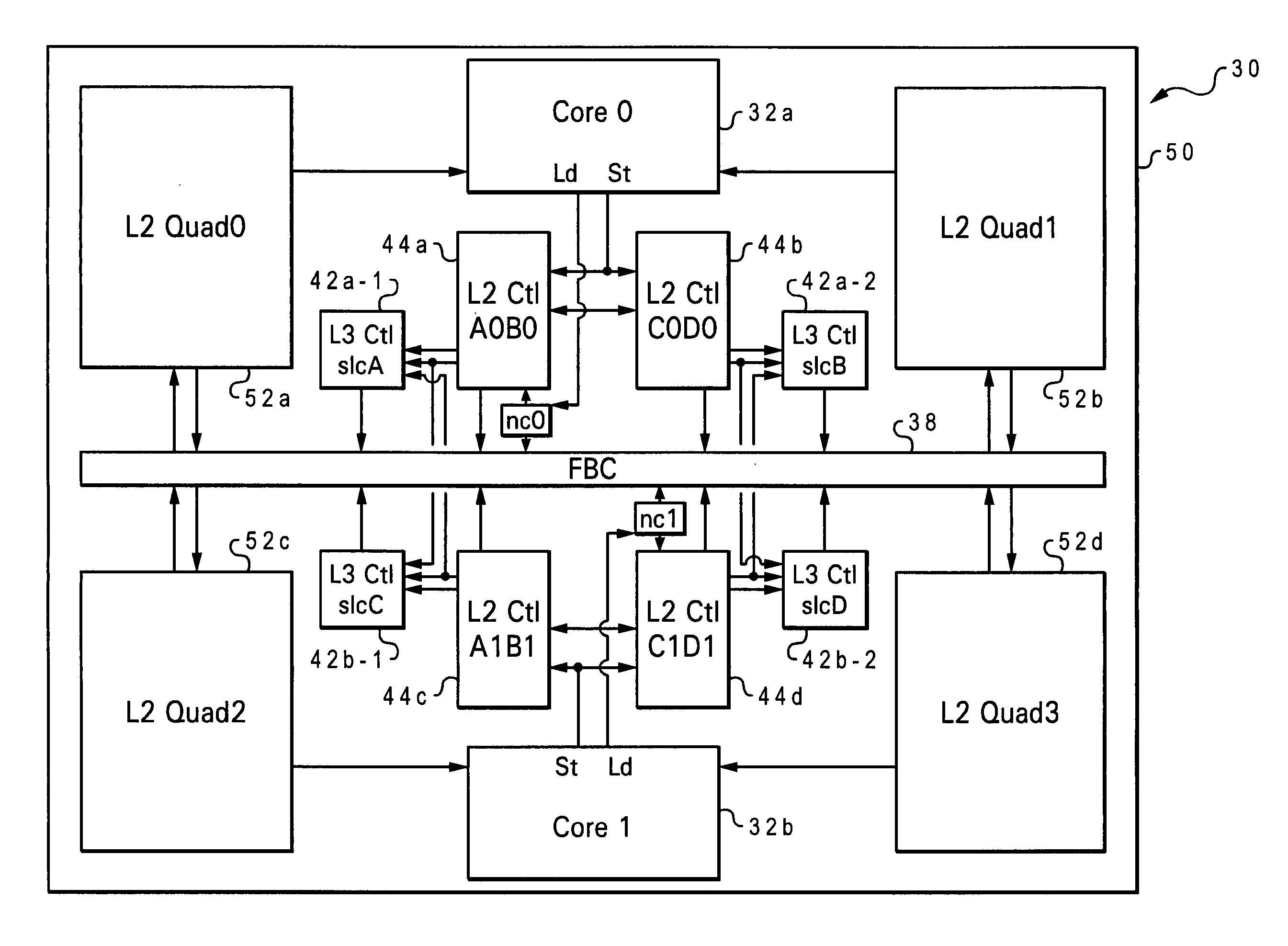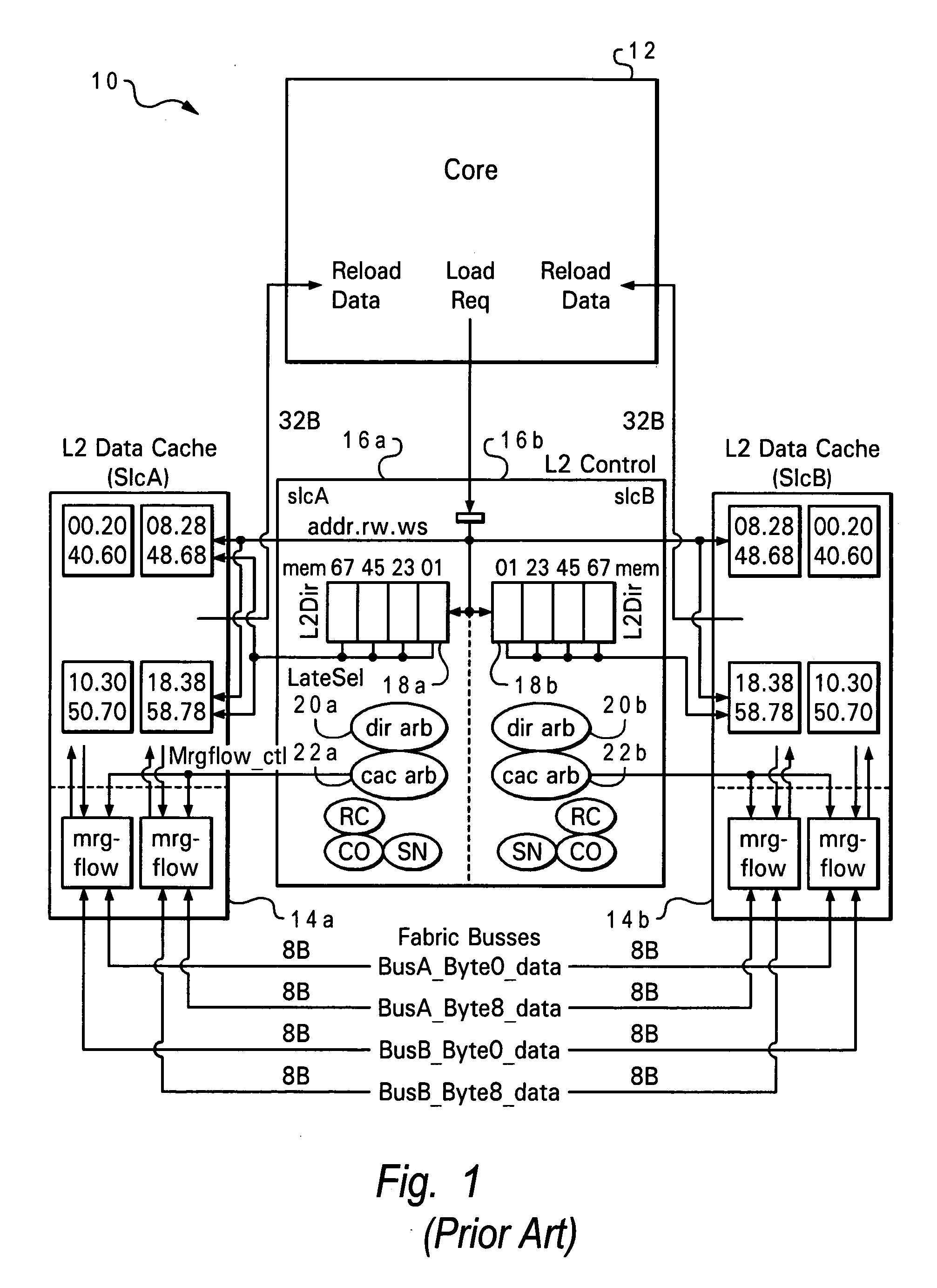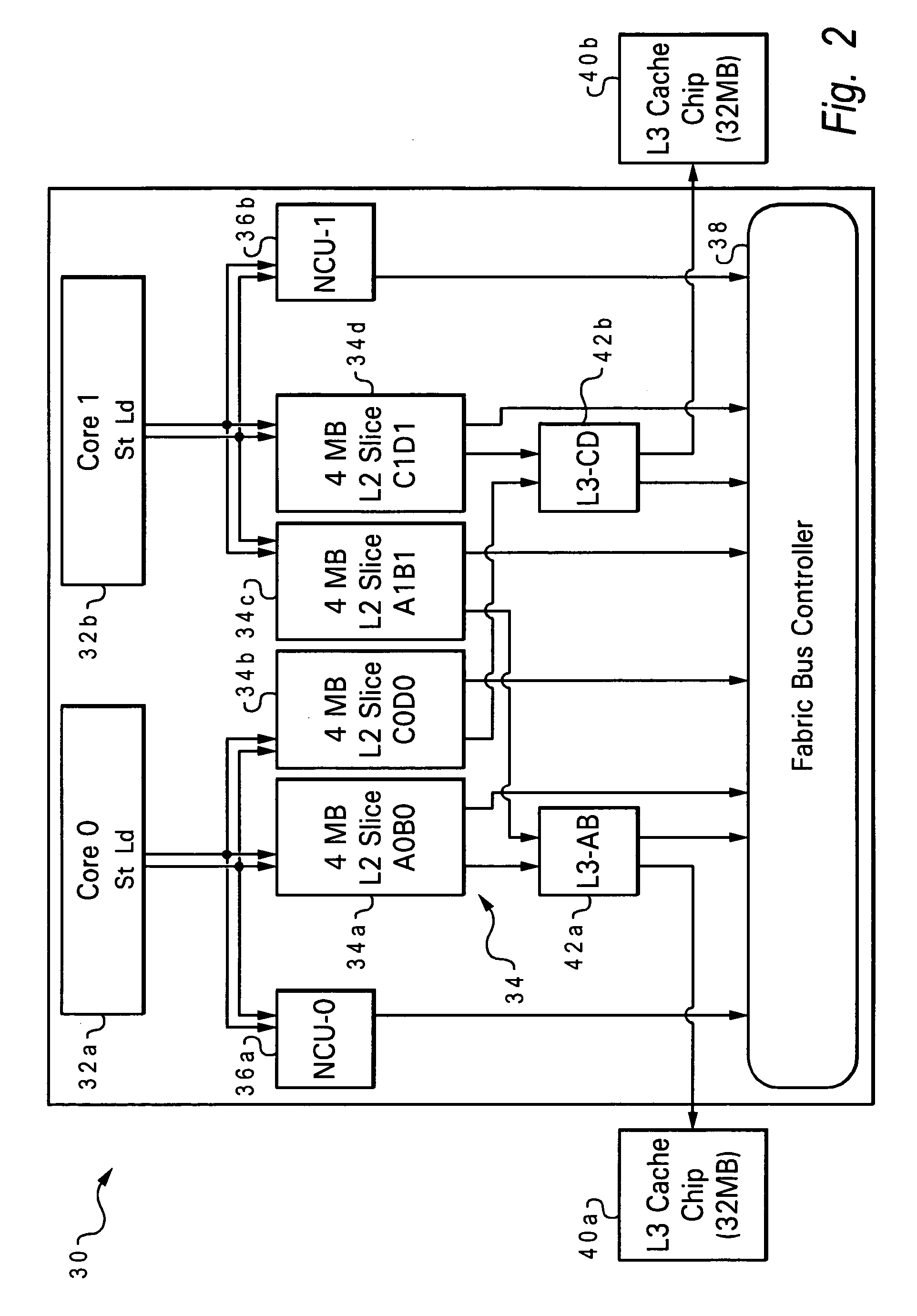System bus structure for large L2 cache array topology with different latency domains
a system bus and cache array technology, applied in the field of computer system memory hierarchy, can solve the problems of introducing or exacerbated other problems, bandwidth and connectivity, power consumption, differential latencies, etc., and achieve the effect of increasing cache latency and high scalabl
- Summary
- Abstract
- Description
- Claims
- Application Information
AI Technical Summary
Benefits of technology
Problems solved by technology
Method used
Image
Examples
Embodiment Construction
)
[0030] With reference now to the figures, and in particular with reference to FIG. 2, there is depicted one embodiment 30 of a processing unit constructed in accordance with the present invention. Processing unit 30 is generally comprised of two processor cores 32a, 32b, a sliced level 2 (L2) cache 34, two non-cacheable control units (NCUs) 36a and 36b (one per core), a fabric bus controller (FBC) 38, and two level 3 (L3) caches 40a, 40b with associated L3 controllers 42a, 42b. Each processing core 32a, 32b includes its own store-through L1 cache (separate program instruction and operand data caches). More than two processing cores may be provided for a single processing unit.
[0031] Processing unit 30 may be part of a larger computer system which includes various conventional elements (not shown), such as firmware or read-only memory (ROM) and main or random-access memory (RAM) coupled to a peripheral component interconnect (PCI) local bus using a PCI host bridge. The PCI host bri...
PUM
 Login to View More
Login to View More Abstract
Description
Claims
Application Information
 Login to View More
Login to View More - R&D
- Intellectual Property
- Life Sciences
- Materials
- Tech Scout
- Unparalleled Data Quality
- Higher Quality Content
- 60% Fewer Hallucinations
Browse by: Latest US Patents, China's latest patents, Technical Efficacy Thesaurus, Application Domain, Technology Topic, Popular Technical Reports.
© 2025 PatSnap. All rights reserved.Legal|Privacy policy|Modern Slavery Act Transparency Statement|Sitemap|About US| Contact US: help@patsnap.com



